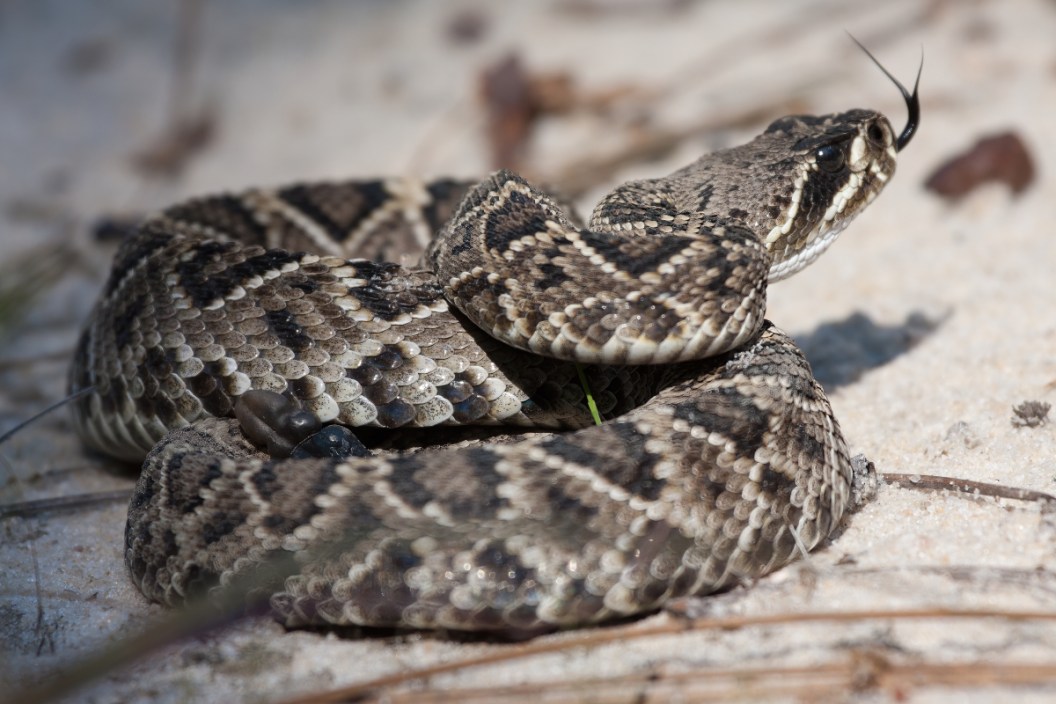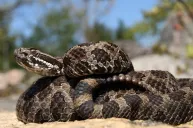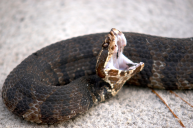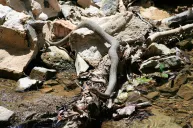Texas has the greatest diversity of snakes in the United States, with over 115 species—both harmless and venomous—making their home in the Lone Star State. Of all those, only four main types of snakes in Texas, with a total of 15 subspecies, are dangerously venomous: copperheads, rattlesnakes, cottonmouths, and coral snakes.
Snakes are important to the Texas ecosystem for their role in controlling rodent populations, according to the Texas Parks and Wildlife Department (TBWD). Snakes don't hunt humans; bites are a defense mechanism, usually a result of the snake being surprised or cornered, or from being improperly handled.
More deaths are attributed annually to lightning strikes than to venomous snakebites, according to the TPWD. But you should still know how to identify the risky ones. Because venomous snakes in Texas are more common in the rural areas and public lands, it's important for outdoor enthusiasts and others who frequent these areas to exercise caution. (But that doesn't mean you won't find snakes near urban areas such as Austin as well!) Here's everything to know about the most dangerous snakes in Texas.
Tips for Identifying Snakes in Texas
If you come upon a snake you want to identify, follow the advice of the U.S. Department of Agriculture to avoid snake bites. Don't get too close—always keep at least 6 feet of distance between you and the snake. In fact, leave wild snakes alone in general; don't touch, poke at, or pester them. Be cognizant of your surroundings, particularly when they have tall grass, piles of leaves, rocks, or stacks of wood. Keep your hands to yourself and watch your feet as you're walking, even on trodden trails. Wear long pants and tall boots when in snake country.
According to a study by the Texas A&M University's AgriLife Extension, the easiest way to tell which snakes are dangerous is to remember the useful rhyme: "Red touch yellow, kill a fellow. Red touch black, friend of Jack." There may be some other variations of this saying, but snakes with red and yellow bands that touch each other call for extra caution. Here's our brief field guide for identifying the species of venomous snakes of Texas.
Copperhead
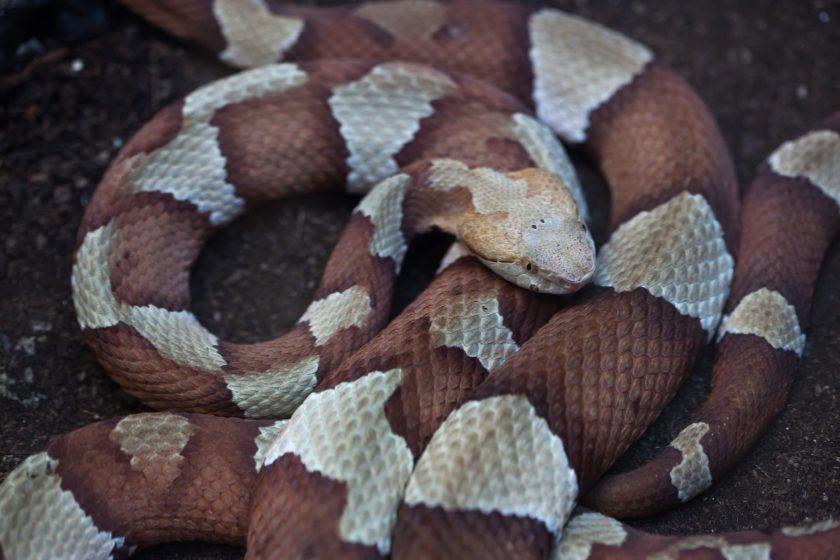
The state of Texas is home to three kinds of copperhead, according to Texas Parks and Wildlife: the Trans-Pecos copperhead, the southern copperhead, and the broad-banded copperhead.
All three snakes have triangular heads and light-colored bodies that can vary from tan to reddish-brown. The color is marked over with darker crossbands that can vary from dark brown to almost red or black. Sometimes, these crossbands can take on an "hourglass" shape. All of these snake species grow to about the same length of 2 feet.
When it comes to copperheads, however, be wary of juvenile snakes, which hatch in August and September and are about 7 to 8 inches long. While the younger snakes can be colored just like the adults, many of them often take on a totally gray coloration, which can make them difficult to identify. The easy giveaway to a baby copperhead, though, is its tail, which is usually bright yellow or green. It's important to remember that these young snakes are just as venomous as the adults, meaning you have to seek help immediately if one bites you.
The distribution of copperheads largely depends on the subspecies. The Trans-Pecos variation is found mostly in South Texas. Ironically enough, southern copperheads are found in East Texas, while the broad-banded type resides mostly in the western and central regions.
Keep an eye out for copperheads in wet areas near lakes and rivers, and wherever grasses are found. Bank anglers should use the most caution in watching for this species, as these snakes will often be hunting fish or small amphibians that frequent marshy freshwater banks.
Rattlesnake
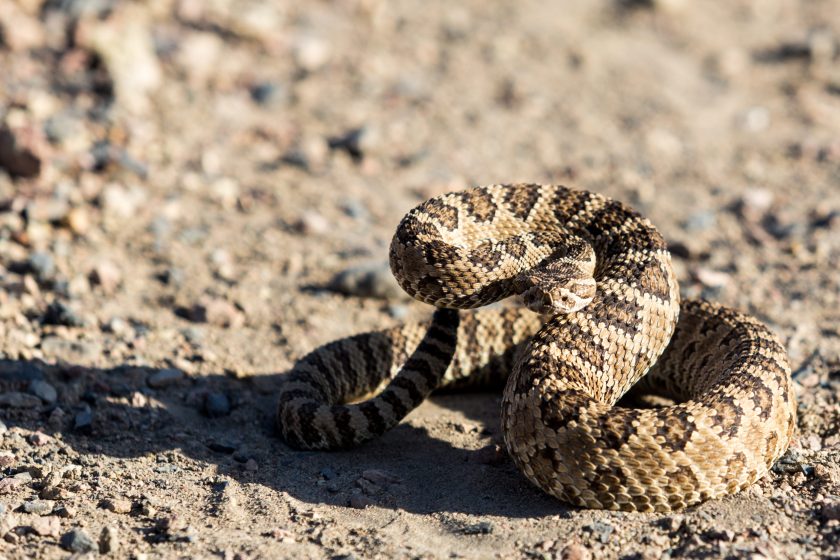
One of the most dangerous snakes in North America, nine subspecies of rattlesnake are found in the Lone Star State. The bites of rattlesnakes are not something you want to contend with, so it's best to give them a wide berth if you spot one.
The giveaway for any rattlesnake is the segmented, hollow tail that gives off the distinctive rattling sound these snakes are known for. This bone-chilling sound will make almost anyone stop in their tracks or even panic, but the best thing to do is stay calm. Slowly back away and exit the area quickly and quietly. Odds are, if you leave the snake alone, they will leave you alone, too. If you are bitten, seek first aid immediately and hurry to a doctor who can administer antivenom.
Texas' species of rattlesnakes
- Blacktail rattlesnake
- Banded rock rattlesnake
- Desert massasauga rattlesnake
- Mottled rock rattlesnake
- Mojave rattlesnake
- Prairie rattlesnake
- Timber rattlesnake
- Western massasauga rattlesnake
- Western diamondback rattlesnake
The two most common rattler species to watch out for in Texas are the western diamondback and timber rattlesnake, which happen to be the two species that also grow the largest.
Found all over the west half of Texas, diamondbacks can easily reach 4 feet in length. They usually sport gray or brown colors with "diamond" blotches that are brown, gray, or almost black. The tail is also marked with black bands.
The timber rattlesnake (crotalus horridus) doesn't grow quite as large as the diamondback, but it's still a sizable snake that reaches 3 to 4 feet. This one is usually brown, tan, or yellow. Unlike the diamondback, it's striped with distinctive brown or black crossbands. However, be careful, as some specimens take on an almost uniform black coloration without distinctive bands.
The Mojave rattlesnake may get mistaken for the western diamondback, although the Mojave does not grow quite as large. Typically found only on the far west edge of the state, this snake often has the tan-and-brown colorations that rattlesnakes are known for, but it can also develop green hues.
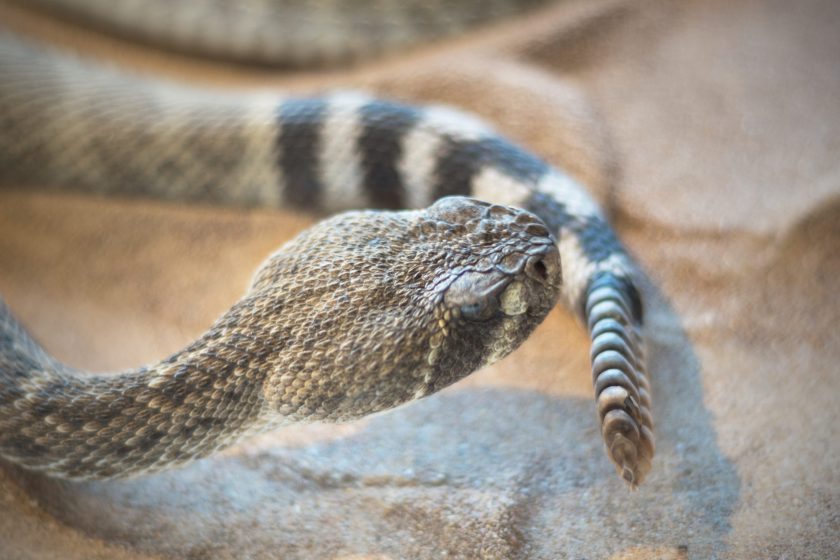
The blacktail rattlesnake is probably one of the easier Texas snakes to spot because the name is quite literal. While the overall color of the snake varies from brown to green, the tail above the rattles is almost jet black. This species is found mostly through the central and western regions of Texas, although one was found in Travis County in central Texas in 2021 for the first time since 1965.
The western massasauga and desert massasauga are two of the smaller variations, only growing to around 21 to 24 inches. These two types are usually found in tall grass and marshy areas. They're encountered less commonly, but you should at least be aware of them.
The banded rock rattler is another that most Texans are not likely to see because of its nocturnal tendencies. It lives exclusively in West Texas, where it doesn't experience a ton of human interaction. This species only grows to about 24 inches, usually appearing gray with darker crossbands and occasionally some green, too.
Another species only found in the west part of the state is the mottled rock rattler. This one also has a light-colored body marked with dark bands and grows a little larger than the banded rock rattler, reaching up to 32 inches. This one is sometimes called the "blue" or "pink" rattlesnake.
Cottonmouth
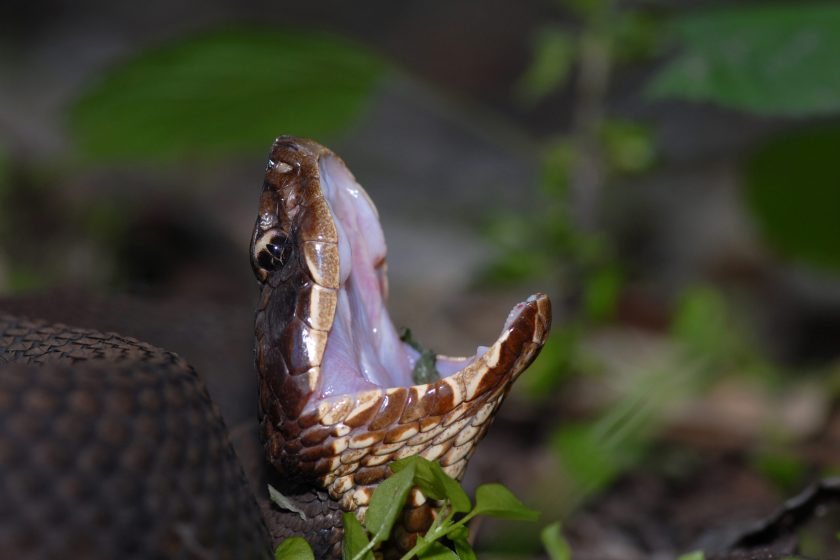
There is only one subspecies of this pit viper in the Lone Star State: the western cottonmouth, or Agkistrodon piscivorus—aka the "water moccasin." Chances are, you'll only run into this bad boy in Central and East Texas up to the Gulf Coast, where you might also confuse it for the slimmer-bodied, non-venomous water snake (nerodia).
Full-grown cottonmouths reach a little over 30 inches. One tell-tale sign of a cottonmouth is the broad, triangular-shaped head. The name cottonmouth refers to the inside of the mouth, which is white in color. Cottonmouth body coloration varies widely. Most are brown, tan, or gray, but some are nearly jet black. That makes it harder to spot the crossbands over much of the reptile's body. These crossbands usually have a lighter portion in the center and a darker outline on the edges that will stand out clearly on the light-colored background.
Another way to spot this species is through its signature threat display. It may try to scare you away simply by opening its mouth widely. You should be especially wary of this species while fishing or swimming in lakes or streams, as its potent venom is enough to kill you. Remember, though, that most bites happen when someone is trying to capture or kill a snake.
Texas Coral Snake
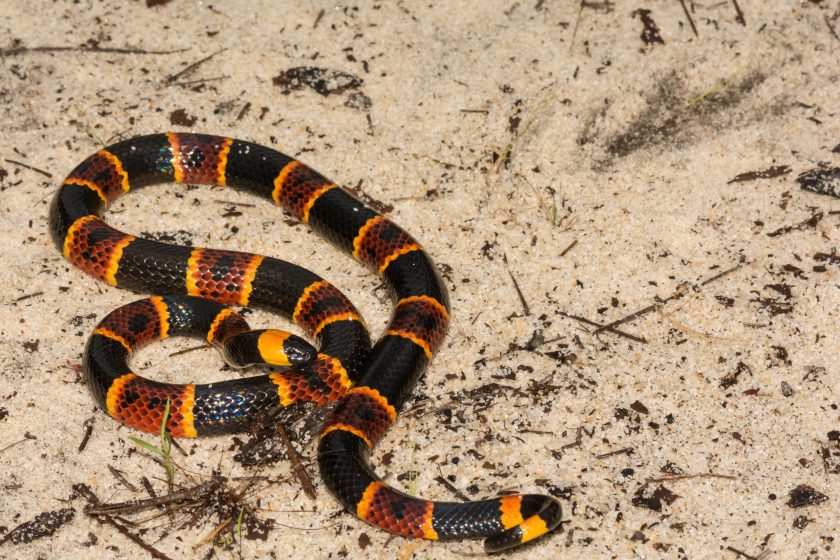
The Texas coral snake (micrurus tener)—a member of the elapid family—is tricky to identify because it bears a striking resemblance to several other species, including non-venomous snakes such as scarlet snakes and milk snakes.
To ID a coral snake, look for a banded snake that's typically less than 2 feet long. The body is marked with broad red-and-black bands interspaced with narrow yellow bands. But use caution, as these snakes can also present some wild color variations, making them difficult to identify.
When in doubt, steer clear of any snake—and everyone will be happy.
